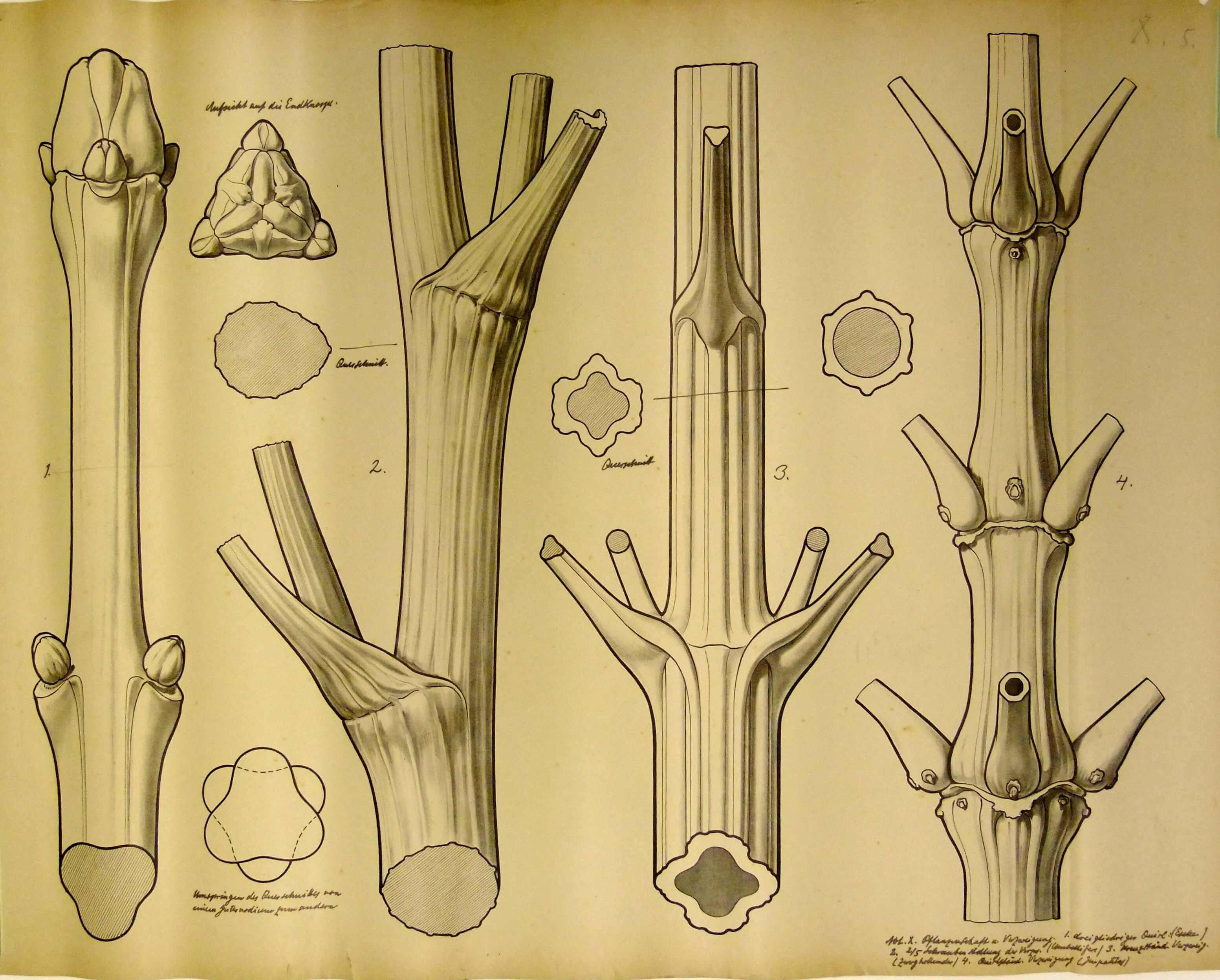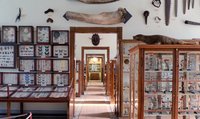Druckentwurf für eine Wandtafel als Lehrmittel mit handschriftlichen Anmerkungen Meurers. Das Blatt wurde in schwarz-weiß ebenfalls wiedergegeben in Meurers Publikation "Vergleichende Formenlehre des Ornamentes und der Pflanze" von 1909 unter der Abt. X., Taf. 5.
Dargestellt sind von links nach rechts der Schaft und der Schaftquerschnitt des Eschensprosses, des Huflattichs, des Zwergholunders und der Gartenbalsamine. Die Tafel illustriert grundsätzliche Konstruktionsprinzipien der Pflanze zwischen Schaft und den Ästen als Querverbindungen. Sie galten Meurer als wichtige Vorbilder der angewandten Künste bei der Entwicklung fester, haltbarer Formen.
en

